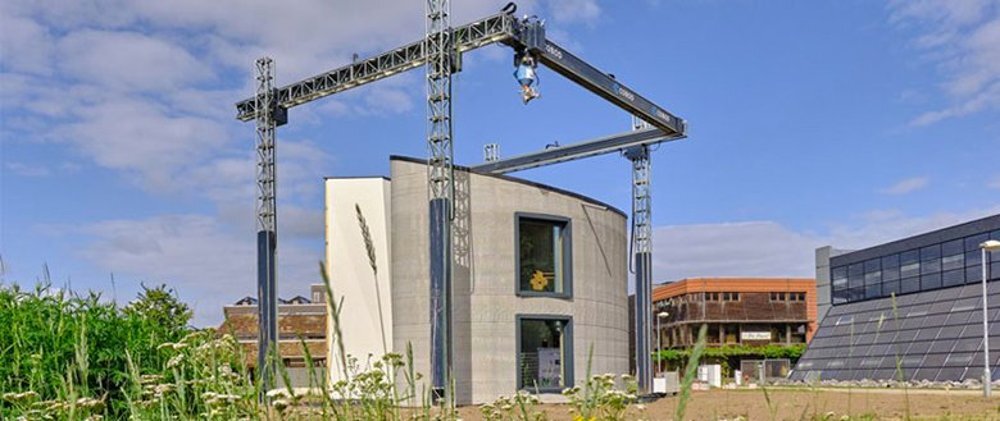Episodes

Tuesday Nov 02, 2021
Season 2 Episode 10: Building a New Way of Living - 3D Construction Printing
Tuesday Nov 02, 2021
Tuesday Nov 02, 2021
In this month’s episode, we are investigating the growth of 3D construction printing and what benefits it may offer to a world with growing populations and ever-reducing resources.

Despite the collapse of construction activity during 2020 as a result of covid, the industry is already on a path to rebuild its lost revenue in 2021. It is estimated that the value of global construction output will increase from its $11.6 trillion level in 2020 to around $14.8 trillion by 2030.
Around 43 million new homes will be required each year globally between now and 2030, with 11 million of these being in India, 7 million in China, 2 million in Nigeria and 1.5 million in the US. China will, for the foreseeable future, remain the largest construction market globally, however many developing countries are driving progress in construction as a result of investment in infrastructure and housing projects to sustain economic growth.
Construction output in the UK is more than £110 billion per annum and accounts for around 7% of the UK’s economic output. Approximately a quarter of construction output is in the public sector and three-quarters is private sector with the industry directly providing jobs for approximately 3 million people that’s about 10% of total UK employment.
Interestingly, in high income nations, there has been a increase in the demand for faster infrastructure development using technologically advanced machines and equipment, with the objective of reducing completion times and material handling costs as well as carbon footprint. This has led to innovations in construction processes which only a few years ago, were considered outside the mainstream. One such technique is that of 3D construction printing or 3DCP.
3DCP covers a whole range of technologies that use 3D printing as a core method to fabricate buildings or construct components, often using industrial robots, gantry systems and tethered autonomous vehicles. There are a variety of 3D printing methods used, which include extrusion; applying concrete/cement, wax, foam, or polymers; powder bonding using polymer bond, reactive bond, or sintering techniques, and additive welding.
Despite what you might think, the concept of 3D construction actually began to gain momentum in the 1980’s but it wasn’t until the mid 90’s that construction at scale, using techniques we now recognise as 3d printing, began to emerge as commercially viable processes.
Over the ensuing decades academia and industry have worked together to refine the techniques and learn more about material properties and the stability of printed structures and engineers have pushed the boundaries of what was once considered impractical or even impossible.
In 2016 the first 3d printed footbridge was constructed in Spain, demonstrating not only the possibilities the technology offered, but also that exact deposition of material, only where it was needed, could significantly reduce the amount of raw materials required. 2017 saw the first 3d printed permanent building constructed, which received all the appropriate building permits and in 2018 the 3d process was used to create a fountain in Russia.
And just a month ago, the IMechE reported the completion of an 18-month project in Italy to 3d print housing structures made entirely from soil adjacent to the building site. The construction of the dome-shaped houses took just over 200 hours. While there is some way to go before this concept is commercially viable, the team carrying out the work hope that it has demonstrated what can be achieved using natural materials, especially in inaccessible locations or poor areas of the world, with little effect on the local environment.
So as our global leaders head home after COP26, having discussed issues including infrastructure, the build environment and our energy use, how will disruptive innovations such as 3DCP become mainstream and will such potentially sustainable processes be incorporated into their climate change strategies, if at all.
Helen sat down with chartered civil engineer Colin Evison to find out more about 3D construction printing, how it all works and what innovative application it might be used for in the future, including the possibility of building homes on mars!
Colin is a Fellow of the Institution of Civil Engineers (just across the road from Birdcage Walk) and also a Fellow of the Institution of Engineering and Technology. In his role as Head of Innovation at BAM Nuttall he has been engaged with 3D concrete printing over the last few years. His interest in 3D printing began when he had small scale architectural models produced to help explain the intent for projects such as the Victoria Station and Tottenham Court Road Station Upgrades on the tube.
Colin is very passionate about this emerging form of construction and as he said in our interview, “Its potential as a building technique is probably only limited by our imagination and the efforts of engineers to solve the challenges that remain.”
Useful Links:
https://www.designingbuildings.co.uk/wiki/Global_construction_market_projections_from_2020_to_2030
https://www.emergenresearch.com/industry-report/construction-market
We would love to hear your thoughts and comments on this episode and the Construction Industry. If you would like to get in touch email us at podcast@imeche.org
You can find more information about the work of the IMechE at www.imeche.org

